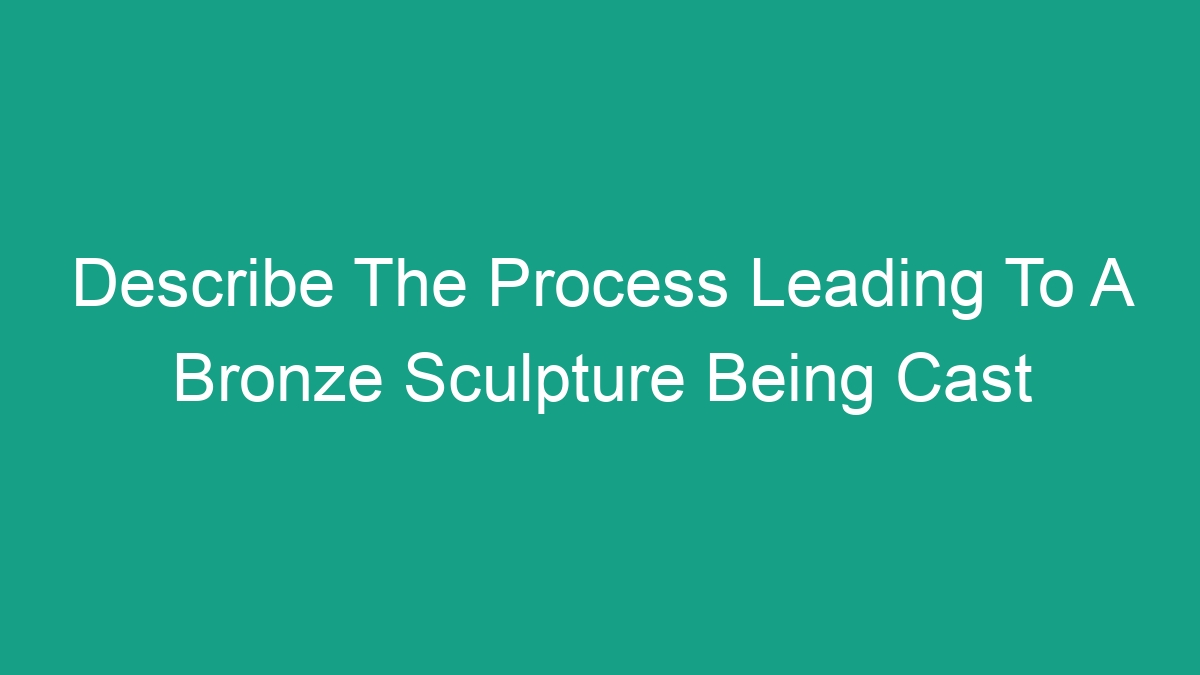
Creating bronze sculptures is a meticulous and intricate process that has been used for centuries to produce stunning works of art. The process of casting a bronze sculpture involves several distinct stages, each requiring precision, skill, and patience. In this article, we will delve into the detailed process leading to a bronze sculpture being cast, from the initial concept to the final product.
Conceptualization and Design
Creating a bronze sculpture typically begins with a conceptualization phase, where the artist envisions their idea and develops a design. This stage involves sketching, 3D modeling, or sculpting a prototype to bring the concept to life. The design phase is crucial, as it sets the foundation for the entire sculpture and dictates its form, composition, and overall aesthetic. Once the design is finalized, the artist may choose to create a maquette – a small-scale model – to visualize the sculpture in three dimensions and make any necessary adjustments.
Mold Making
Once the design is complete, the next step in the process is mold making. The artist creates a mold of the sculpture, which will ultimately be used to cast the bronze. The mold making process can vary depending on the complexity of the sculpture, but it generally involves creating a negative impression of the original sculpture using materials such as silicone rubber, plaster, or other mold-making compounds. This step requires great attention to detail to ensure that all the intricacies and fine details of the original sculpture are accurately captured in the mold.
Wax Casting
After the mold is created, the next phase is wax casting, where the mold is used to produce a wax replica of the original sculpture. This is achieved by pouring molten wax into the mold and allowing it to cool and harden, creating an exact replica of the original sculpture. The wax casting process is crucial, as any imperfections or flaws in the wax replica will be transferred to the final bronze casting. Once the wax replica is produced, the artist may make any final adjustments or refinements before proceeding to the next stage.
Spruing and Investment
The wax replica is then prepared for the casting process by attaching a series of wax rods, called sprues, to it. These sprues serve as channels through which molten bronze will flow during the casting process, as well as vents for air and gases to escape. The entire assembly, known as the sprue tree, is then immersed in a slurry of ceramic materials, called investment, which forms a shell around the wax replica. This investment shell will later be used to contain the molten bronze during the casting process.
Bronze Casting
Once the investment shell is set, the next step is bronze casting, which involves melting and pouring molten bronze into the shell to create the final sculpture. The investment shell with the sprue tree is placed in a high-temperature kiln, causing the wax to melt and burn out, leaving behind a hollow cavity in the shape of the original sculpture. The molten bronze is then heated to its liquid state and poured into the cavity, filling the space previously occupied by the wax. This requires precision and skill to ensure that the bronze completely fills the cavity and captures all the intricate details of the original sculpture.
Finishing and Patination
After the bronze has cooled and solidified, the investment shell is removed, revealing the raw bronze casting. This raw casting may require additional work to remove any remaining sprues and gating, as well as to clean up the surface and refine the details. This process, known as finishing, may involve welding, grinding, and polishing to achieve the desired look and texture for the sculpture. Once the finishing is complete, the artist may choose to apply a patina to the bronze to create the desired color and appearance. Patination involves the application of chemicals and heat to the bronze surface, resulting in a range of colors and textures that enhance the visual appeal of the sculpture.
Mounting and Display
With the sculpture fully cast, finished, and patinated, the final step is to mount and display the bronze sculpture. The artist may choose to mount the sculpture on a base or pedestal, depending on the size and design of the piece. Proper mounting is essential to ensure the stability and longevity of the sculpture, especially for outdoor installations. Once mounted, the bronze sculpture is ready to be displayed in a gallery, museum, or public space, where it can be admired and appreciated by viewers.
Conclusion
Creating a bronze sculpture is a labor-intensive process that requires a combination of artistic vision, technical skill, and craftsmanship. From the initial conceptualization and design to the final casting and finishing, each stage of the process plays a critical role in bringing the artist’s vision to life. The art of bronze casting has a rich history and tradition, and its enduring appeal continues to captivate art enthusiasts around the world. By understanding the detailed process leading to a bronze sculpture being cast, we can gain a greater appreciation for the artistry and dedication involved in creating these timeless works of art.



